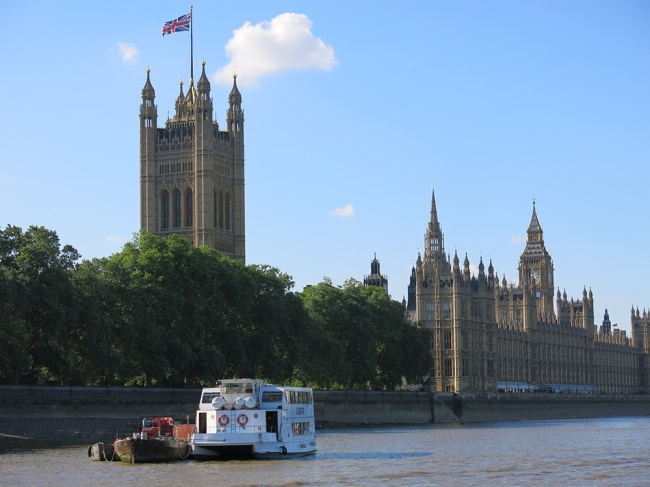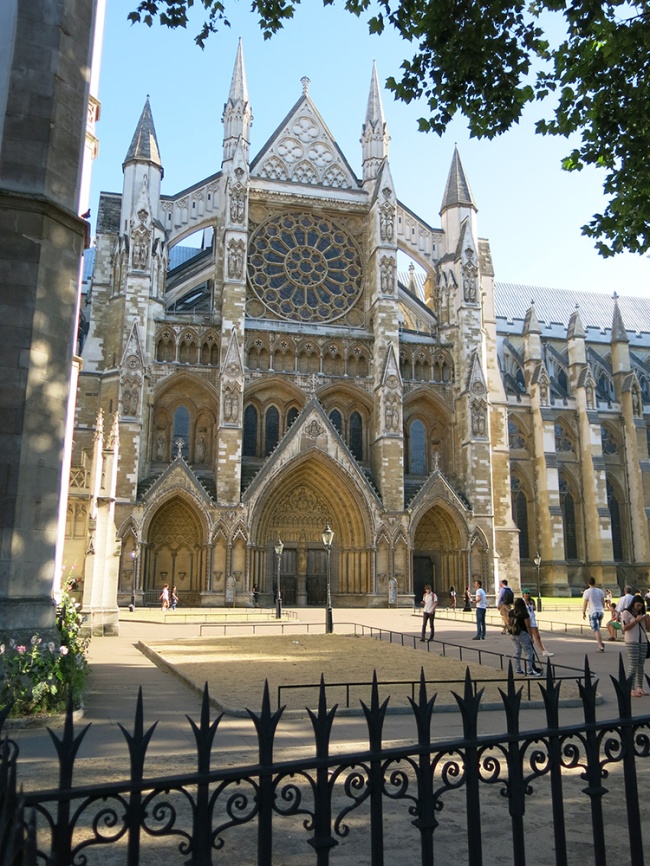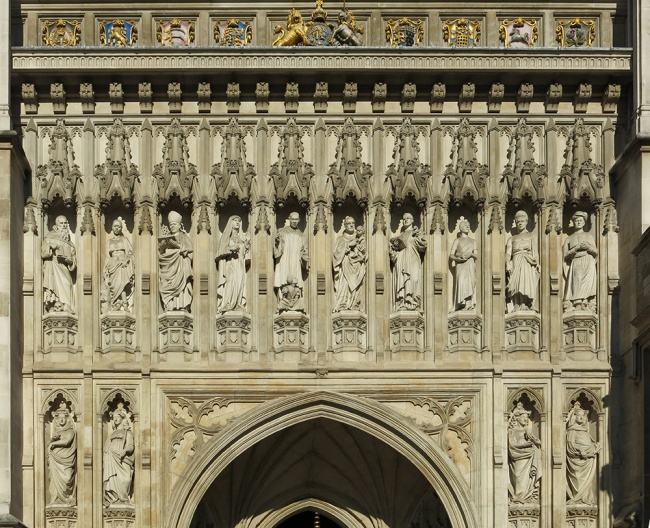In our various day trips around London we frequently passed by the Houses of Parliament, Big Ben, and Westminster Abbey. This view is from the boat we took from Kew as we approached the dock.
A little Wiki background: The Palace of Westminster is the meeting place of the House of Commons and the House of Lords, the two houses of the Parliament of the United Kingdom. Commonly known as the Houses of Parliament after its tenants, the Palace lies on the Middlesex bank of the River Thames in the City of Westminster, in central London. Its name derives from the neighboring Westminster Abbey. It’s very striking, especially from the river, what a wall the Houses of Parliament create facing south across the Thames. Big Ben is the nickname for the great bell of the clock at the north end of the Palace of Westminster in London, and often extended to refer to the clock and the clock tower.
The tower is officially known as the Elizabeth Tower to celebrate the Diamond Jubilee of Elizabeth II. The tower holds the largest four-faced chiming clock in the world and is the third-tallest free-standing clock tower. The tower was completed in 1858 and had its 150th anniversary on 31 May 2009. There’s no question about its landmark status as a visual element, though now it has some competition from its circular neighbor across the river.
Westminster Abbey, formally titled the Collegiate Church of St Peter at Westminster, is a large, mainly Gothic, church, located just to the west of the Palace of Westminster.
It is one of the most notable religious buildings in the United Kingdom and is the traditional place of coronation and burial site for English and, later,British monarchs. The abbey is a Royal Peculiar and between 1540 and 1550 had the status of a cathedral. Since 1066, the coronations of English and British monarchs have been held here. Construction of the present church was begun in 1245 by Henry III who selected the site for his burial. Henry VIII assumed direct royal control in 1539 and granted the abbey the status of a cathedral by charter in 1540, simultaneously issuing letters patent establishing the Diocese of Westminster. By granting the abbey cathedral status Henry VIII gained an excuse to spare it from the destruction or dissolution which he inflicted on most English abbeys during this period. Westminster was a cathedral only until 1550. The expression “robbing Peter to pay Paul” may arise from this period when money meant for the abbey, which is dedicated to Saint Peter, was diverted to the treasury of St Paul’s Cathedral.
To help continue the distinction between the Catholic Church and Henry VIII’s new Church of England, prominent English citizens replaced the saints commonly found above the entrance.




